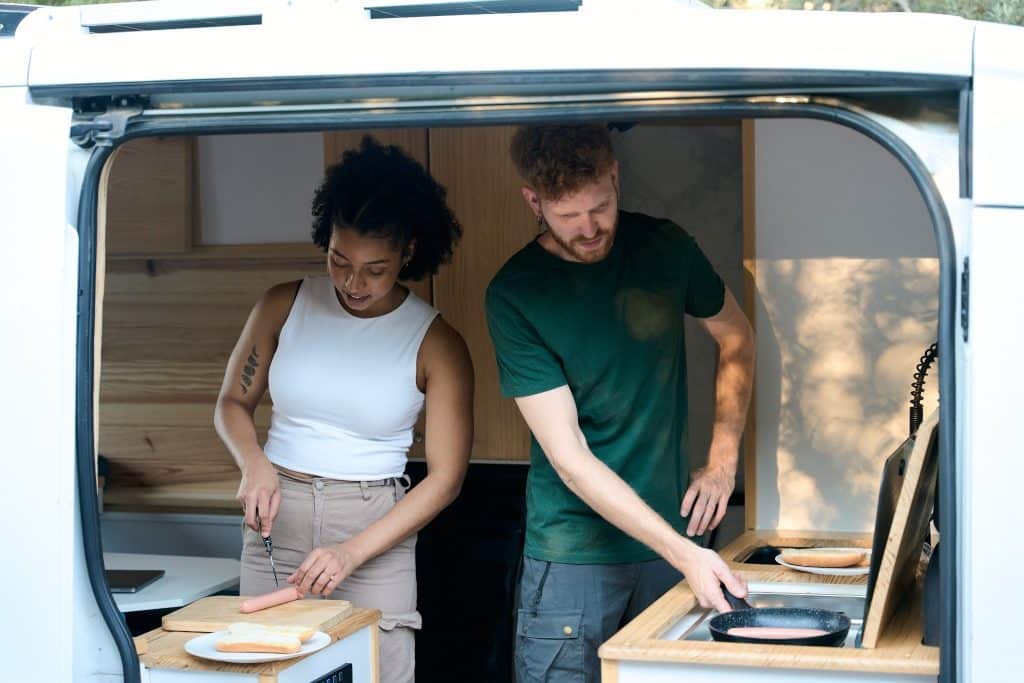If you’ve ever wondered whether coliving for digital nomads is a trend or a sustainable way of living, you’re not alone. As more remote workers pack up laptops and passports, the question of where to live on the road is becoming more pressing. Hotels are expensive, Airbnbs feel isolating, and hostels can be distracting.
Enter coliving for digital nomads: flexible housing that blends affordability, community, and productivity. For some, it’s a dream come true. For others, it feels like glorified shared housing. This guide dives into the ups, downs, and real experiences so you can decide if coliving for digital nomads fits your lifestyle.
Defining Coliving for Digital Nomads
Coliving for digital nomads refers to purpose-built housing where residents get private rooms but share common areas, coworking zones, and often weekly events. Think of it as the middle ground between a hostel and a serviced apartment. The goal is simple: provide community and infrastructure so nomads can focus on work and exploration rather than worrying about Wi-Fi, leases, or furniture.
Travelers often read blogs like Viral Voyage On a Budget to figure out which coliving spaces stretch their money further without sacrificing comfort.
Why Coliving Appeals to Digital Nomads
1. Instant Community
One of the strongest draws of coliving for digital nomads is the built-in social circle. Arrive in Bali or Lisbon and you’ll instantly find housemates who understand your lifestyle. Instead of lonely dinners, you share meals, brainstorm projects, or head out for hikes together.
2. Productivity Built In
Reliable Wi-Fi, ergonomic desks, and quiet coworking areas are standard features in many coliving houses. That means no more hunting for coffee shops or spending hours in noisy lobbies.
Even travel writers covering Viral Voyage Travel Hacks note that this setup saves precious time, freeing you to focus on actual work.
3. Flexibility
Unlike long-term leases, coliving for digital nomads often lets you stay for a week, a month, or several months without penalties. For nomads experimenting with new cities, that flexibility is priceless.

The Cost of Coliving for Digital Nomads
Cost varies widely. In Southeast Asia, you can find coliving for digital nomads for $400–600 per month, including utilities. In Europe or the U.S., expect $900–1,500 for a private room in a shared house.
The trade-off is convenience. You’re paying for more than a bed—you’re paying for stability, coworking facilities, events, and the freedom to leave when your visa runs out.
Many travelers compare prices by exploring hubs listed in Viral Voyage Epic Destinations, where coliving setups are common.
The Downsides You Can’t Ignore
Privacy Challenges
Living with others means less personal space. Thin walls, shared kitchens, and rotating housemates can test your patience.
Lifestyle Clashes
Night owls and early birds don’t always mix well. A design freelancer working late might disturb a developer with 6 a.m. calls.
High Turnover
Coliving for digital nomads often has a revolving door of residents. While exciting socially, it can feel unstable if you crave routine.
Premium Costs
Not every coliving setup is affordable. Some charge a premium for perks like yoga classes, surfboards, or rooftop pools.
To make sense of what’s worth paying for, nomads often browse firsthand reports in Viral Voyage Digital Nomad blogs.
Health and Lifestyle in Coliving Spaces
Health often gets overlooked, but coliving for digital nomads can influence your daily habits. Shared kitchens make cooking affordable and social, which is healthier than eating alone at restaurants. Many houses also host yoga sessions, group hikes, or fitness challenges.
On the flip side, living with others might mean late-night events or constant socializing, which can disrupt sleep. Choosing coliving for digital nomads with a balanced culture helps you maintain your wellness routine. Ultimately, your health depends on how well you adapt community life to your personal needs, making it an important factor when considering this lifestyle.
Comparing Coliving with Other Options
| Feature | Coliving for Digital Nomads | Airbnb / Apartment | Hostel |
|---|---|---|---|
| Community | Strong, built-in network | Minimal | High, but transient |
| Flexibility | High (weekly/monthly) | Often low (strict contracts) | High, but chaotic |
| Amenities | Coworking, Wi-Fi, events | Varies, usually none | Shared dorms, basic |
| Privacy | Medium (private room, shared spaces) | High | Low |
| Cost | Moderate–High | Moderate–High | Low |
This balance explains why coliving for digital nomads has become the go-to for those seeking both productivity and connection.

Stories from the Road
- Anna in Bali: She doubled her productivity because she no longer wasted hours searching for cafés with good Wi-Fi.
- Mark in Lisbon: Networking at dinner tables led to freelance opportunities he wouldn’t have found elsewhere.
- Luisa in Chiang Mai: She left early after noisy housemates disrupted her work calls—proof that coliving for digital nomads isn’t for everyone.
Coliving and Local Culture
Coliving for digital nomads doesn’t just connect you to other travelers—it also gives you entry points into local culture. Many spaces partner with tour guides, language schools, or community groups. This makes it easier to engage with locals while still enjoying the comfort of international company.
For instance, some houses in Mexico host cooking classes with neighborhood chefs, while others in Spain organize flamenco nights. By blending community with culture, coliving for digital nomads gives you more than just a roof—it offers immersive experiences. If exploring culture is part of your journey, coliving spaces can truly enhance it.
How to Choose the Right Coliving Space
- Read reviews carefully — Don’t trust glossy websites. Look for feedback on cleanliness, Wi-Fi, and vibe.
- Start with short stays — Book a week to test the culture before signing up for months.
- Check amenities — Some include cleaning, laundry, or meals; others don’t.
- Understand house rules — Quiet hours, guest policies, and event schedules matter.
- Assess location — Proximity to markets, gyms, and transport can make or break your stay.
These steps reduce the risks and make coliving for digital nomads more enjoyable.
When Coliving Works Best
Coliving for digital nomads is ideal when:
- You’re staying one to three months in a city.
- You crave connection more than solitude.
- You rely on solid internet for your livelihood.
- You want built-in networking opportunities.
When Coliving Might Not Suit You
Skip coliving for digital nomads if:
- Privacy is your top priority.
- You’re on a very tight budget.
- Your work demands confidentiality or odd hours.
- You prefer stability and dislike frequent turnover.
Emotional and Psychological Side
Beyond logistics, coliving for digital nomads affects your emotional state:
- Homesickness: Constantly meeting new people can make you miss familiar faces.
- Burnout: Being around ambitious peers can pressure you to overwork.
- Overstimulation: Social energy can drain you, especially if you’re introverted.
Acknowledging these factors helps you decide whether coliving for digital nomads supports your well-being.

The Future of Coliving for Digital Nomads
As remote work expands, coliving for digital nomads is likely to grow too. Developers are building entire complexes designed for location-independent workers, with coworking floors, wellness centers, and social hubs all under one roof. Some cities even offer government-backed incentives, linking coliving houses with digital nomad visas.
This shift suggests coliving for digital nomads is not just a passing phase but a long-term housing trend. With demand rising, expect more options, competitive pricing, and specialized themes—from eco-living houses to startup incubators. For nomads planning long-term, the future looks promising, making coliving a lifestyle worth watching closely.
Wrapping It Up
Coliving for digital nomads is a unique lifestyle experiment that blends affordability, community, and structure. For some, it’s the missing puzzle piece that makes nomad life sustainable. For others, it’s too loud, too expensive, or too unstable. The truth is somewhere in the middle.
If you thrive on connection, want flexible leases, and need reliable Wi-Fi, coliving for digital nomads is worth every cent. If you value solitude or long-term stability, traditional rentals may serve you better.
The best approach? Try it once. Book a trusted coliving space in a hub like Chiang Mai, Lisbon, or Medellín. Test how it fits your rhythm. Such varied stories are why blogs like Viral Voyage emphasize trying coliving short-term before fully committing.



